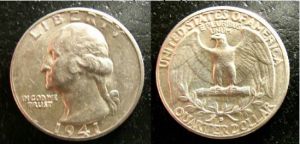
By David Liechty
One of the many considerations to make in purchasing gold and silver is the divisibility of the coins you buy. With today’s gold prices at over $1,200 per ounce, a 1-ounce gold coin will fetch you a good price if you sell it, but what if you only want to sell part of an ounce and hold the remainder until prices rise even further?
If you’re keeping gold and silver as a hedge against currency collapse, how do you divide a $1,200 coin to make purchases of less than this amount, say $500, or even less. How could you barter at the farmers’ market for a head of romaine and some grass-fed beef? You’d either have to stock up and bring a pretty big shopping cart, or find some way to break that $1,200 coin into smaller pieces.
In such a situation, you could turn either to fractional gold coins or silver. Many gold coins are minted in fractions of an ounce, from half-ounce down to tenth-ounce coins. One challenge with these coins, however, is the high premium that the market charges over the actual value of the metal in the coin.
For instance, at current market conditions, with gold trading at a spot price of $1,200 per ounce, half-ounce gold American Eagles would cost you around $655, or $1,310 per ounce, a premium of 9.1% over spot. Quarter-ounce gold American Eagles would cost about $330, or $1,320 per ounce (10% over spot), and tenth-ounce gold American Eagles would cost around $145, or $1,450 per ounce (20.8% over spot). That extra amount over spot that you pay reflects money gone, paid and never to be recovered.
Fractional South African Krugerrands, Canadian Maple Leafs, and Austrian Philharmonics follow suit with increasing premium over spot as the coin size diminishes – some with relatively higher premiums and some a bit lower. These premiums can make them attractive to mint and sell. When the buyer turns around and sells them back, however, they rarely, if ever, get the extra premium paid back.
The practicality of fractional gold coins is limited not only by the very high premium charged by the market, but by the still-relatively high value of the coins. With a $145 tenth-ounce gold coin, you would still have to take a fairly large shopping cart with you to a farmers’ market to get your full money’s worth.
Silver presents a better option for storing your precious metals in the form of fractional coins. Silver not only trades at a much lower spot price per ounce, but the premiums on smaller silver coins are a fraction of those you would pay with gold. Currently (and this is generally the case) the best buy on silver coins is US 90% silver coins – circulated dimes, quarters, and half-dollars minted by the United States government
prior to 1965.
Under current market conditions and with silver trading at $18.50 per ounce, 90% silver coin would cost you $13.91 per face-dollar value (four quarters, two half-dollars, or ten dimes), which is 0.715 ounces of silver. This would equal $19.45 per ounce, or 5.1% over spot. This is half the premium you would pay on quarter-ounce gold coins and a quarter of what you would pay on tenth-ounce gold coins.
The bottom line is that you get more metal for your dollar and you will have lots of small-sized coins to meet your fractional needs. An added bonus is silver’s currently greatly undervalued cost compared to gold. But the merits of using the gold-silver ratio to guide your purchases and holdings is a story for another time.

